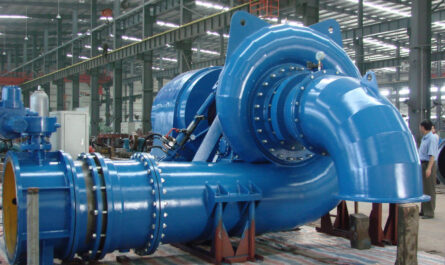Composite materials are increasingly being used in various industries like aerospace, automotive and wind energy due to their high strength to weight ratio and corrosion resistance. However, laying composite tapes and fibers by hand is a labor intensive and time consuming process. To overcome these challenges, automated fiber placement (AFP) and automated tape laying (ATL) machines were developed which can lay composite tapes and fibers automatically with high precision and speed.
Automated Fiber Placement
Automated fiber placement (AFP) is a machine guided process for manufacturing composites by placing carbon fiber, glass fiber or other reinforcing fibers onto a mold or tool surface. In AFP, fibers are pulled off spools or creels at high speeds and are precisely cut and placed onto the tool using computer controlled fiber placement heads. The fiber placement heads have a pneumatic system that holds and places the tows or bundles of fibers directly onto the mold.
Automated Fiber Placements And Automated Tape Laying Machines can place fibers in specific orientations and shapes as per the structural requirements to optimize part performance. The fibers deposited can be unidirectional, woven or stitched as per requirements. Continuous unidirectional fiber tapes are usually utilized but staple fibers can also be applied. AFP heads can turn on three axes to accurately follow complex contours of the mold surface. They can lay fibers up to 1000 inches per minute producing large composite components like aircraft wings and fuselages. AFP can reduce labor costs significantly compared to manual layup and produce parts with improved quality and properties.
Automated Tape Laying
Automated tape laying (ATL) machines work on similar principle to AFP but place continuous rolls of prepreg composite tapes onto tools instead of individual fibers. The main difference between ATL and AFP is that ATL utilizes pre-impregnated composite tapes which have the resin already incorporated while AFP places dry fibers which require subsequent resin infusion. In ATL machines, composite tapes of various fiber orientations like 0°, ±45°, 90° etc. are loaded onto creels or spools.
The tapes are then pulled off at high speeds by tape placement heads mounted on multi-axis robotic arms. Similar to AFP heads, the ATL heads can turn and follow complex curved contours to deposit tapes with high position accuracy. As the tapes pass through the heads, they are heated utilizing infrared or hot gas heating systems to activate the matrix resin. This helps the tapes stick smoothly onto the tool surface without any waviness or wrinkles. ATL has higher placement rates than AFP, with rates up to 1500 inches per minute. It is suitable for large aerospace primary structures with simple rib and stringer patterns.
Advantages of Automated Composite Layup
The main advantages of automated fiber placement and tape laying machines over manual layup methods are:
– Increased productivity: AFP and ATL machines can lay composite materials at extremely high speeds of up to 1000-1500 inches/minute. This results in substantial time and cost savings for manufacturing large composite parts.
– Improved part quality: Automated machines ensure fiber/tape placement with very high precision tolerances of ±0.005-0.020 inches. This provides superior part quality and repeatability compared to manual layups.
– Complex part manufacture: The multi-axis capabilities of AFP/ATL heads allow them to accurately place fibers/tapes on complex doubly curved surfaces which are difficult to manufacture manually.
– Lower labor costs: Automated layup machines reduce the labor intensiveness of the process and manual labor requirements by around 80%. This substantially reduces manufacturing costs.
– Reduced scrap and rework: Automated layup has a very low defect rate leading to less scrap, rework and rejection of parts. This enhances manufacturing efficiency.
– Productivity improvement: Real-time feedback data from AFP/ATL machines help optimize machine parameters and layup programs for maximum output.
– Consistent fiber volumes: Automated machines can maintain tight control over critical parameters like fiber volume fractions throughout the part for optimal material properties.
Applications
With their precision, speed and ability to handle complex geometries, automated layup machines are being increasingly adopted in many industrial sectors:
– Aerospace: Largest application area for wing and fuselage sections of commercial aircraft, rotor blades, launch vehicles etc.
– Wind energy: Blades, nacelles and other wind turbine components are commonly produced using AFP and ATL.
– Transportation: Automotive, marine, rail components like bodies, structural panels benefit from these technologies.
– Industrial/infrastructure: Pipes, tanks, bridges gain advantages of high strength composites laid automate.
In summary, automated fiber placement and tape laying have revolutionized the manufacturing of advanced composite parts. Their high productivity, quality and economic benefits are driving the adoption of these technologies in various industries globally. New developments continue to improve machine speeds and capabilities enabling new applications.
*Note:
1. Source: Coherent Market Insights, Public sources, Desk research
2. We have leveraged AI tools to mine information and compile it




